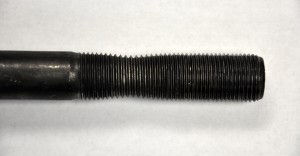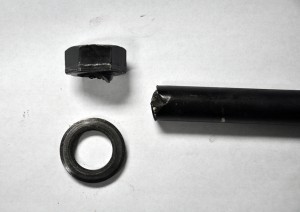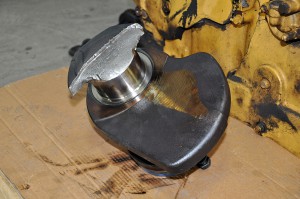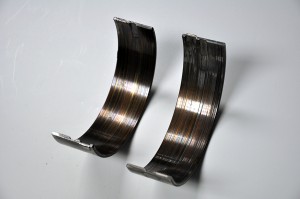 How often should you change your oil? The answer depends on your oil filtration system. Thirty-five years ago I started using by-pass oil filters – not to extend the recommended drain intervals, but to simply keep the oil cleaner. The rule back then was once the engine had consumed one gallon of oil, it was time to change it. During the 1980s, the mechanical engines would usually burn one gallon of oil in about 8,000 miles and the oil would get changed at 10,000 miles. When we started installing by-pass 1-micron filters, the engines began running up to 14,000 miles before consuming the first gallon of oil. Sometimes, after we rebuilt an engine, it would run as far as 23,000 miles before the oil needed to be changed.
How often should you change your oil? The answer depends on your oil filtration system. Thirty-five years ago I started using by-pass oil filters – not to extend the recommended drain intervals, but to simply keep the oil cleaner. The rule back then was once the engine had consumed one gallon of oil, it was time to change it. During the 1980s, the mechanical engines would usually burn one gallon of oil in about 8,000 miles and the oil would get changed at 10,000 miles. When we started installing by-pass 1-micron filters, the engines began running up to 14,000 miles before consuming the first gallon of oil. Sometimes, after we rebuilt an engine, it would run as far as 23,000 miles before the oil needed to be changed.
The standard full-flow oil filter, which is stock on your engine, filters down to 40 microns. A young person’s eye can see 40-micron dirt! The clearance in a rod and main bearing while a truck is pulling a hill is HALF a micron!! The aftermarket by-pass filters are generally around the 1-micron size and do a great job of filtering the oil. I highly recommend that you replace your stock filters with better ones!
 Oil analysis provides great information and is the best way to keep track of how your engine is wearing. The two items I look at most are the iron (Fe) in the oil and the silicone (Si), which is ingested dirt getting past the air filter(s). These two contaminants will wear out the engine very quickly. We also look at the level of chromium (Cr), which is piston ring wear, then lead (Pb), which comes from main and rod bearings, copper (Cu), which comes from bushings, bearings and thrust washers, tin (Sn), coming from bearings and bushings again, and aluminum (Al), which comes from some pistons, bearings and thrust washers.
Oil analysis provides great information and is the best way to keep track of how your engine is wearing. The two items I look at most are the iron (Fe) in the oil and the silicone (Si), which is ingested dirt getting past the air filter(s). These two contaminants will wear out the engine very quickly. We also look at the level of chromium (Cr), which is piston ring wear, then lead (Pb), which comes from main and rod bearings, copper (Cu), which comes from bushings, bearings and thrust washers, tin (Sn), coming from bearings and bushings again, and aluminum (Al), which comes from some pistons, bearings and thrust washers.
Another common concern these days is high soot levels. Most engines today are EGR engines, so of course the soot levels will be higher – this engine is designed to eat its own soot! Some of this soot has to get past the piston rings, along with the blow-by. An engine has to have some blow-by, which is what keeps the second ring on the piston seated against the ring gland. If no blow-by gets past the top ring, then the second ring will float up and down against the ring gland and wear it out. So, please don’t be too concerned about some blow-by. Be sure to install one of our oil traps on the end of the blow-by tube – it catches the oil as it comes out of the tube. Usually, it will be about half a cup of oil for every 10,000 miles driven.
The whole purpose of this article is to get you to change your oil at a predetermined interval. I prefer to see the iron level at 20 parts-per-million (ppm), but that is a very conservative number. I can live with 60 ppm, which should be around 50,000 miles. Running 200,000 miles (or more) on the engine oil is out of the question in my book. I do not like having to call you while we are doing an in-chassis rebuild on your engine and tell you the crankshaft is bad or that the camshafts are worn out because of dirty oil. Mechanics get to see inside the engines they work on, and every mechanic I know changes their oil frequently. Oil is the life-blood of the engine, so do not allow it to get too dirty.
 Now, let’s analyze and compare an engine with good filtration and proper drain intervals with one we recently had in our shop. The first engine has 1,000,000 miles on it, is equipped with by-pass oil filtration, and received oil changes every 40,000 miles. During this time, 25 oil changes would have performed at an average cost of $150 each (doing it yourself at home, like you should). That is a total of $3,750 worth of oil and filters.
Now, let’s analyze and compare an engine with good filtration and proper drain intervals with one we recently had in our shop. The first engine has 1,000,000 miles on it, is equipped with by-pass oil filtration, and received oil changes every 40,000 miles. During this time, 25 oil changes would have performed at an average cost of $150 each (doing it yourself at home, like you should). That is a total of $3,750 worth of oil and filters.
The second engine was one we recently had in our shop – it had 1,078,571 miles on it and the oil had not been changed for almost 240,000 miles. The iron particles in the oil were 140 ppm and the silicon was 17 ppm – this is way too much! Not only were the main and rod bearings wiped out (see photo), but so was the crankshaft (one of the photos shows a broken crankshaft). Cummins had no ReCon short blocks or long blocks in stock, so we had to remove and replace the entire engine and install a new crankshaft, along with rebuilding the rest of the engine. The cost of this rebuild was about $35,000. That, my friends, will buy you a LOT of oil changes (even if you don’t do them yourself at home). The 425-B Caterpillar engine, which is one of the best engines ever built, ran 20 ppm of iron particles in the oil every 10,000 miles, and THAT is where I like to see my oil (or less, obviously).
Let’s talk a little bit about s-t-r-e-t-c-h-e-d head bolts. When torturing (funny how when I tried to type “TORQUING” the spell-check changed it to “torturing” – LOL) bolts, you must consider how hard you are pulling on the torque wrench. If the needle is not increasing as you are tightening, then the bolt is stretching. If you are using a “clicker” type of torque wrench and you don’t hear the click with the same amount of pull that you have given to the other bolts, then the bolt is stretching. Once this happens, the bolt you are tightening is junk and must be replaced (see photo). We recently had three of the head bolts stretch on one engine we were working on, so all of them were scrapped and replaced with new bolts. Sometimes, under extreme pressure, these bolts can even break (see photo)!
 Dominic Santucci, a great race car engine builder from back in the 1970s, once told me, after I blew an engine on the race course, “A racer’s biggest enemy is metal fatigue.” What do you think your engine and truck are doing every time it’s pulling a hill or mountain? If the engine doesn’t have to work as hard to climb the mountain, then it is not suffering from nearly as much metal fatigue and will therefore live much longer. By being built to produce more horsepower and “breathe” by reducing the amount of back-pressure in the exhaust system, an engine will not need to work nearly as hard to get the job done. As a result, it lives longer, pulls stronger, burns a lot less fuel, and pollutes less. If you have any comments or questions, I can be reached at Pittsburgh Power in Saxonburg, PA at 724-360-4080 or via e-mail at bruce1@pittsburghpower.com.
Dominic Santucci, a great race car engine builder from back in the 1970s, once told me, after I blew an engine on the race course, “A racer’s biggest enemy is metal fatigue.” What do you think your engine and truck are doing every time it’s pulling a hill or mountain? If the engine doesn’t have to work as hard to climb the mountain, then it is not suffering from nearly as much metal fatigue and will therefore live much longer. By being built to produce more horsepower and “breathe” by reducing the amount of back-pressure in the exhaust system, an engine will not need to work nearly as hard to get the job done. As a result, it lives longer, pulls stronger, burns a lot less fuel, and pollutes less. If you have any comments or questions, I can be reached at Pittsburgh Power in Saxonburg, PA at 724-360-4080 or via e-mail at bruce1@pittsburghpower.com.
